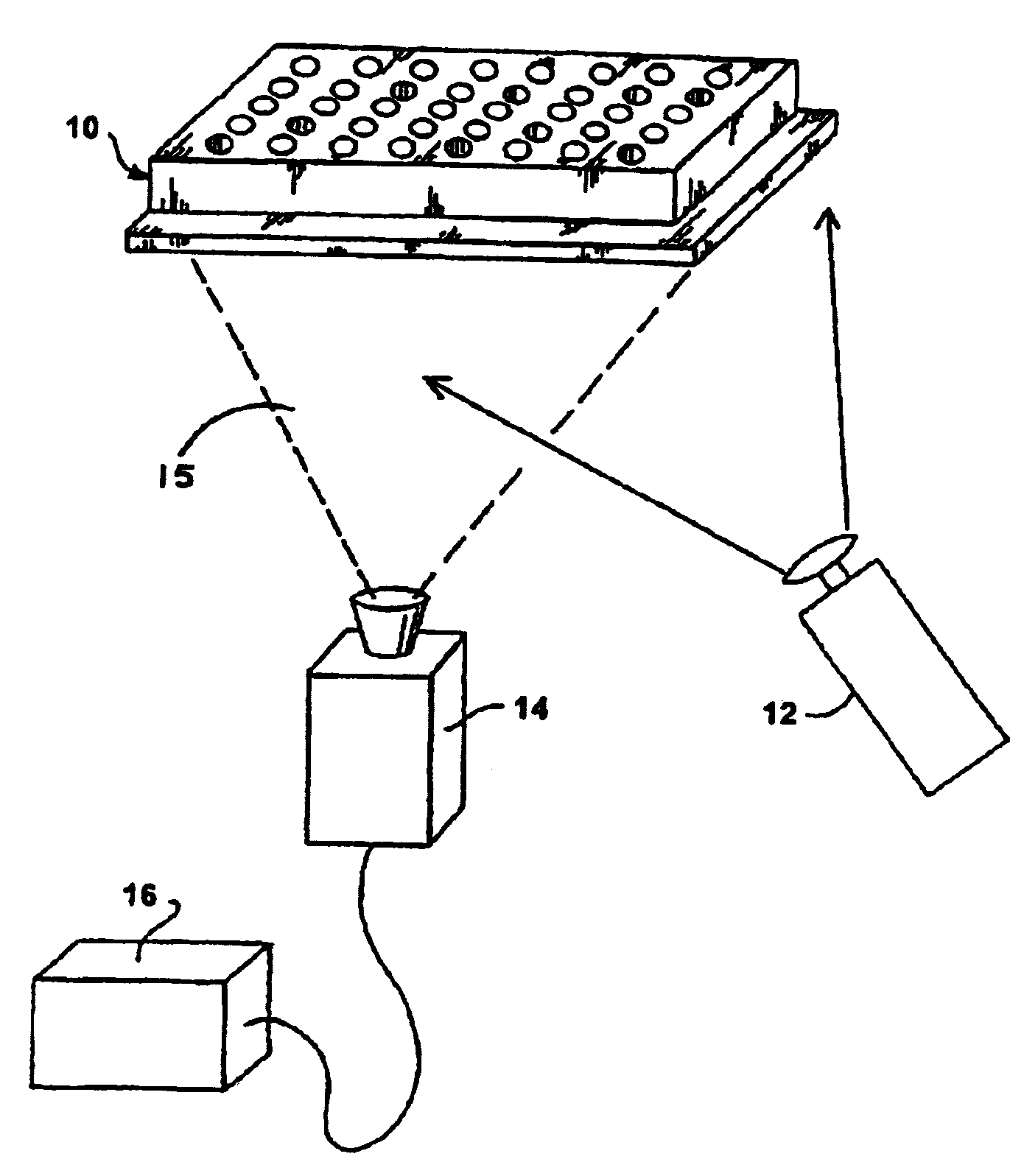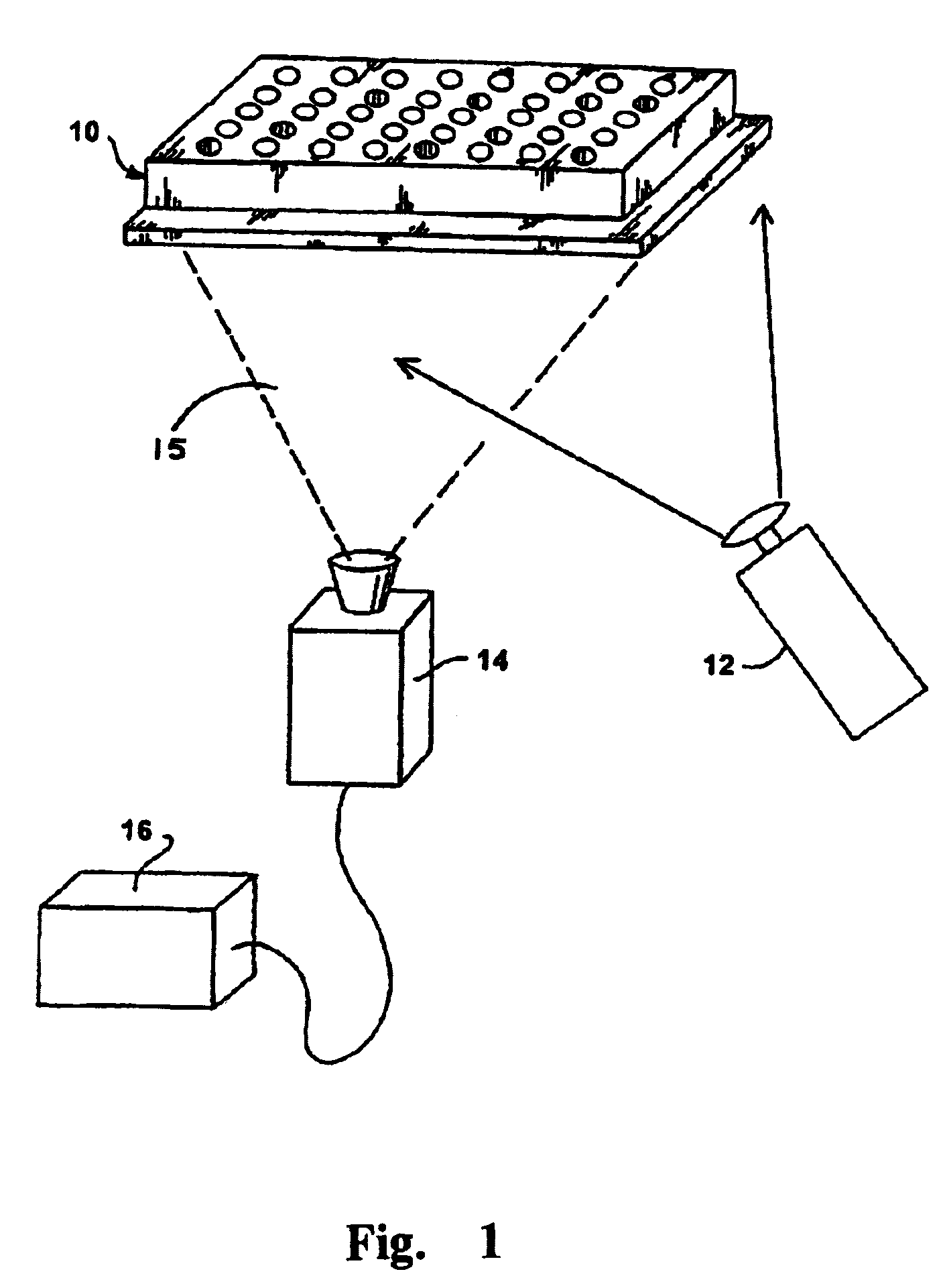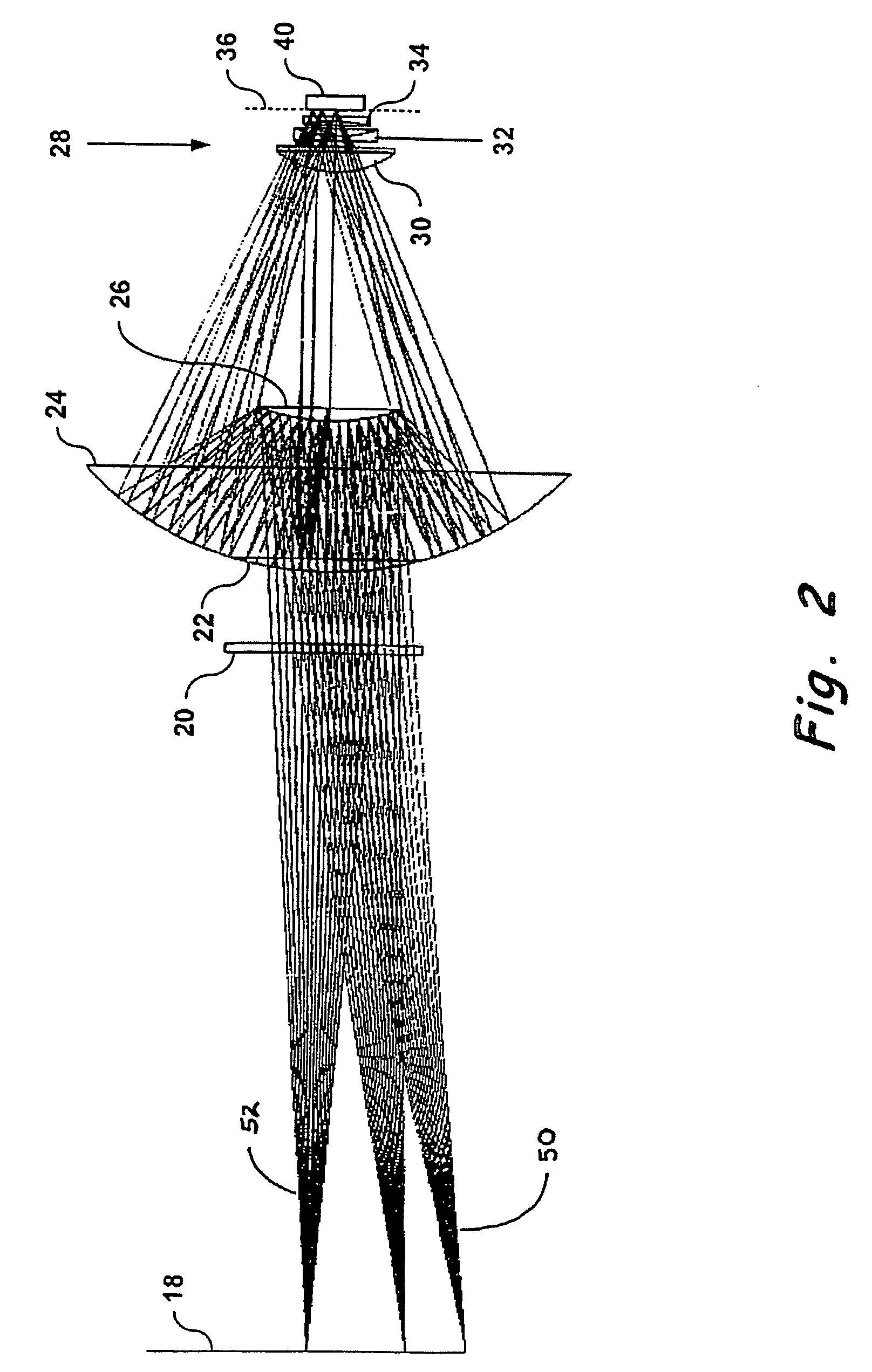Reflective optic system for imaging microplate readers
a microplate reader and reflector technology, applied in the field of fluorescence and luminescence analytical techniques, can solve the problem of reducing the overall assay throughput, and achieve the effect of wide field of view
- Summary
- Abstract
- Description
- Claims
- Application Information
AI Technical Summary
Benefits of technology
Problems solved by technology
Method used
Image
Examples
Embodiment Construction
[0015]Typically, optics to image multi-well plates include very large refractive systems, with many lens elements. Plates having up to 1,536 wells, however, present a problem for conventional optics because each well is necessarily smaller than wells of a 384 well plate used in conventional systems, and accordingly samples in the wells produce less total light. In addition, higher optical resolution is required, and must be available over a relatively wide field. A wide field of View is desirable for high throughput, as it permits a 1,536 well plate to be imaged simultaneously with high efficiency.
[0016]Illuminating multi-well plates with lasers can enable simultaneous imaging due to the intensity of lasers. Laser illumination, however, can be troublesome because the high-powered lasers used may require three-phase electrical power and their own water-cooling systems. Further, laser illumination is not color versatile—that is, it lacks the ability to excite samples at a wide variety...
PUM
 Login to View More
Login to View More Abstract
Description
Claims
Application Information
 Login to View More
Login to View More - R&D
- Intellectual Property
- Life Sciences
- Materials
- Tech Scout
- Unparalleled Data Quality
- Higher Quality Content
- 60% Fewer Hallucinations
Browse by: Latest US Patents, China's latest patents, Technical Efficacy Thesaurus, Application Domain, Technology Topic, Popular Technical Reports.
© 2025 PatSnap. All rights reserved.Legal|Privacy policy|Modern Slavery Act Transparency Statement|Sitemap|About US| Contact US: help@patsnap.com



